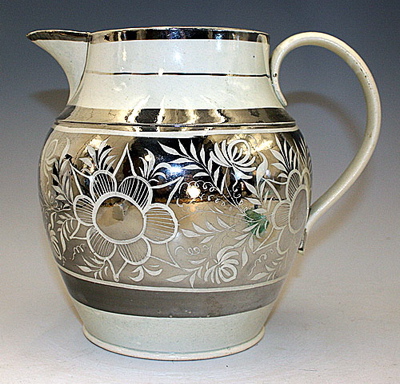This soft paste pottery “Dutch” shape jug is decorated in a stylized grape leaf pattern using a silver resist method of decoration. This type of decoration is achieved by painting the design with a resist substance such as thinned honey, applying the silver glaze over the entire jug, washing off the resist to reveal the unglazed decoration and firing to set the silver lustre background
Silver lustre, or “poor man’s silver” was first introduced in the 18th century by John Hancock for Spode. It remained popular throughout the 19th century, until the invention of electro plating brought silver plated items in to the masses in 1838. This jug measures 4-3/4″ tall
Tin was used to fashion a replacement handle and strap, most likely by an itinerant tinsmith or china mender
Another silver resist lustre jug shown with its original handle with the same silhouette as the replacement
Photo courtesy of John Howard
Tags: English, lustre, metal handle, pottery, soft paste



